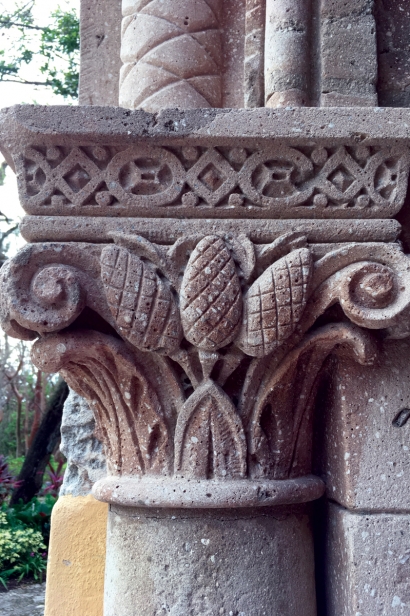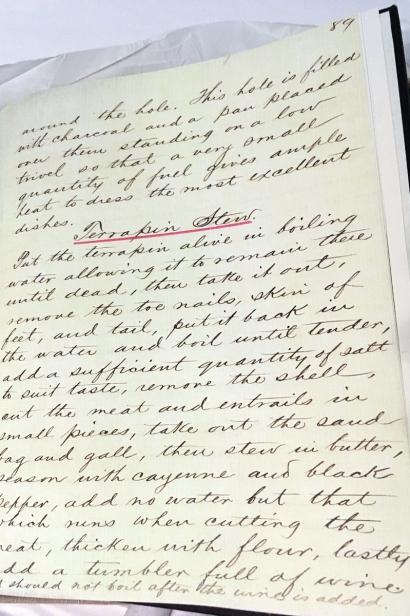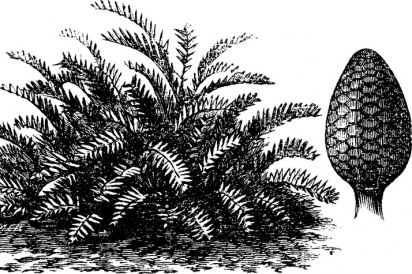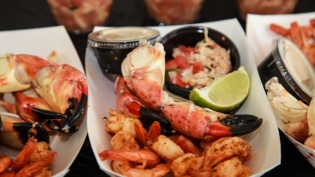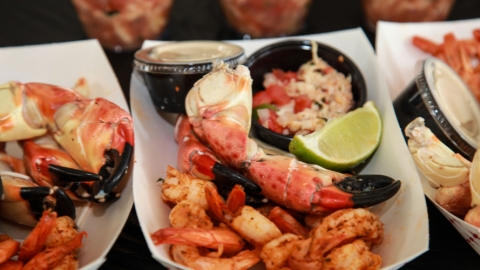Foodways at the Deering Estate
The 444-acre Deering Estate tells a unique story about South Florida’s past. Fossils found here reveal human presence as far back as 10,000 years, as well as remains from now-extinct animals, including peccaries, mammoths, sloths, dire wolves and saber-toothed cats. The property – including coastal tropical hardwood rockland hammocks and pine rockland habitat, mangrove forests and salt marshes – has been home for the Tequesta, the Seminoles and early Bahamian and white settlers.
“We are situated on a feature called the Miami Rock Ridge, and partly this ridge is what has continually attracted human habitation over millennia,” says Francis Oliver, museum registrar. “The high ground was just instinctively more appealing and safer.” Rare and native plants, including orchids, bromeliads, ferns, and more than 40 species of trees, thrive here, along with gray foxes, spotted skunks, squirrels, snakes, butterflies and birds. While Hurricane Irma took its toll on the native tree canopy, most of the collections and historic houses were preserved and open to the public on Oct. 1. “We pushed and worked as quickly as we could to make those reopening days happen,” says Kim Yantis, the cultural arts curator for the Deering Estate.
What They Ate
Over thousands of years, diverse groups – Paleo-Indians, the Tequesta (also spelled Tekesta), Seminoles, Afro-Bahamians and Anglo-Americans have lived here. A shell mound of the Tequesta here reveals animal bones and shell tools used in hunting of animals like alligator, deer and turtles. They didn’t farm the land, but lived off what they caught and hunted, as well as palmetto berries and sugarberry.
When the Seminoles arrived in 1830s, the land was known as their hunting grounds. Celebrating Christmas with the Seminoles, settler J.W. Ewan in 1901 described the meal: “Sof-kee is a combination of coontie starch and green corn, making a coarse gruel. They were also eating young alligator tails, terrapin and garfish barbecued, to which were added sweet potatoes and bananas.” Ewan also described eating “mullet roes, venison, home-cured bacon, five varieties of bananas, pawpaws, baked sweet potatoes, guava jelly and coontie pudding” with homesteaders John and Mary Addison. According to Bethany Gray, historic preservation and curatorial manager, an 1876 promotional pamphlet quotes an Addison boarder: “Squashes, once planted here, grow forever. Sweet potatoes the same ... You can have green peas, new potatoes, cabbage onions, etc. every month in the year.”
New Foods
Plant explorers also introduced tropical food plants on the site. Henry Perrine, given a land grant in 1939 for the tract, cultivated sisal hemp, a type of agave, from Mexico. Botanist Dr. David Fairchild paid a visit to Dr. Samuel Richmond, who opened the three-story Richmond Cottage, the first hotel between Coconut Grove and Key West. Fairchild noted in Reminiscences of Early Plant Introduction in South Florida, “there was in a clearing near a Cutler a small tree of the Canistel (Lucuma nervosa), and since I had never seen the species, I was interested to taste it, and found it, as most people do at the start, a curious but not unpleasant fruit.”
Wealthy Chicago industrialist Charles Deering and first chairman of International Harvester – and brother of James, who built Vizcaya – began buying the property in 1916 and turned the Richmond Cottage into his winter home before building the Stone House. Deering, who became friends with Fairchild, established the mango and avocado groves still there today.
“To see man and nature colliding, and this intentional placement of these avocados where they wouldn’t have naturally grown, and then this distinction on your left where you’re seeing marlberry and all of these natural, native fruits growing,” says Oliver. “It’s what they both lend to understanding a more nuanced environmental history of the area.”
Dinner with Mrs. Charles Deering
Marjory Stoneman Douglas wrote in her 1987 biography, Voice of the River: “When you went to Mrs. Deering’s place for dinner, you’d have cocktails in the drawing room of the rock house, then go out across a boardwalk to the old frame house, where there was a parlor and a big dining room. They had a butler from Spain, named Eusebio, and an upstairs maid named Catherine, who were married. … There were a lot of stories about Mrs. Deering’s penny-pinching, and I think most of them were true. For dinner, she would serve fish that were caught right off her own pier so they hadn’t cost anything. Her specialty was cheese souffles, I suspect because the ingredients were inexpensive. We’d have vegetables from her garden. There was always a meat course, but the meat was terrible. You could hardly cut it, because she’d have bought the cheapest kind.”
In the Deering family recipe book, belonging to Marion Denison Whipple, hand-written recipes for foods and homemade medications reveal ingredients of the day, but not much in the way of instructions:
Terrapin (Mrs. T.) – To 1 good sized terrapin, add 3 cloves, 6 allspice, a small onion, chopped fine – ¼ pound of butter, mixed with flour to thicken it – a small quantity of mace, and cayenne pepper and salt to your taste. Add wine.
Ginger Bread – 4 quarts of flour – 1 pound of butter –½ pound of lard – 8 tablespoons of ginger – and as much molasses as will make it up – add a cup of brown sugar – then roll out and bake.
Charles Deering’s Prohibition Wine Cellar
A connoisseur of art, antiques and fine liquor, Charles Deering built a large Prohibition wine cellar, hidden behind shelving and secured with a three-ton bank vault door. His heirs reported that the outer door jammed shut during a 1945 hurricane, and the combination was lost. In the summer of 1985, the lock was picked and the vault opened to reveal a roomful of 4,500 of bottles of wine and spirits. On Aug. 24, 1992, Hurricane Andrew’s storm surge completely flooded the cellar and contaminated any remaining liquor.
Edible Plants at Deering
Red Mulberry – One of the most delicious fruits of the hardwood hammock, red mulberry (Morus rubra) was eaten raw, dried or cooked into jam or jelly. Fruits were also made into a tonic as a refreshing drink and to reduce fevers. Roots and bark were brewed as a tea to treat urinary problems and constipation. A kind of cloth was made from the inner bark, and parts of the tree were used to produce dye.
Coontie – Coontie (Zamia floridana or Z. integrifolia) is a cycad, a primitive plant during the dinosaur age. Native Timucuan and Calusa removed the toxic cycasin from its stem by maceration and washing, then used the starchy residue to produce a bread. The Seminole Indians learned this process and also used the starchy stem to make another dish called sofkee stew. By the 1880s, several mills were in business in Miami processing as much as 18 tons of coontie daily and by 1911, the starch was known as Florida arrowroot. So much was harvested that the atala butterfly, whose larva eat the leaves, became nearly extinct. Today, coontie is used a landscape and garden plant and the butterflies have returned.
Visit the Deering Estate
The Deering Estate is open 10am-5pm every day except Christmas and Thanksgiving. Admission (adults $12, youth 4-14 $7) includes self-guided programs and naturalist-led tours of the historic Stone House, Richmond Cottage and natural areas. You can also visit during special events. For details, visit deeringestate.org.



